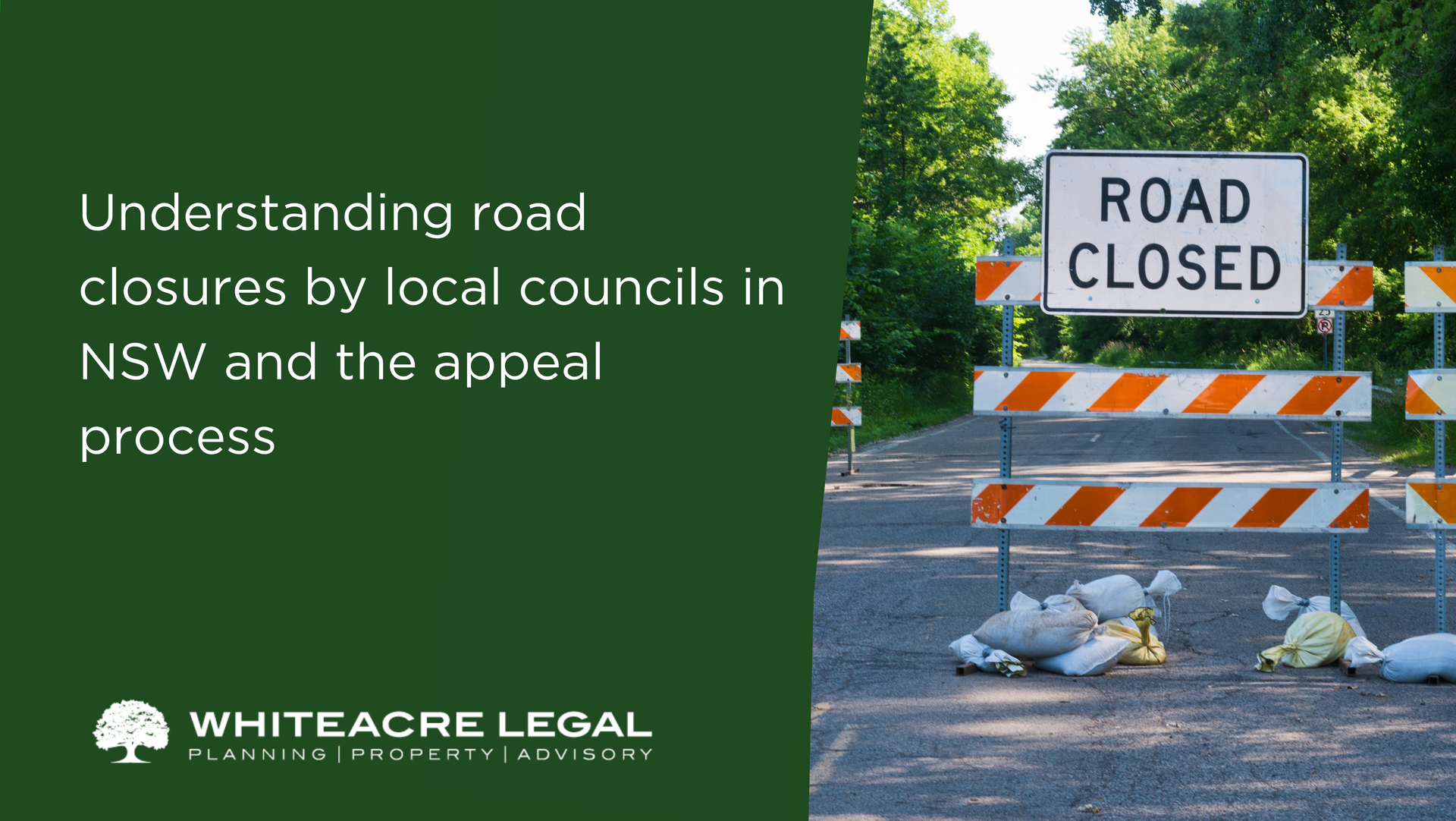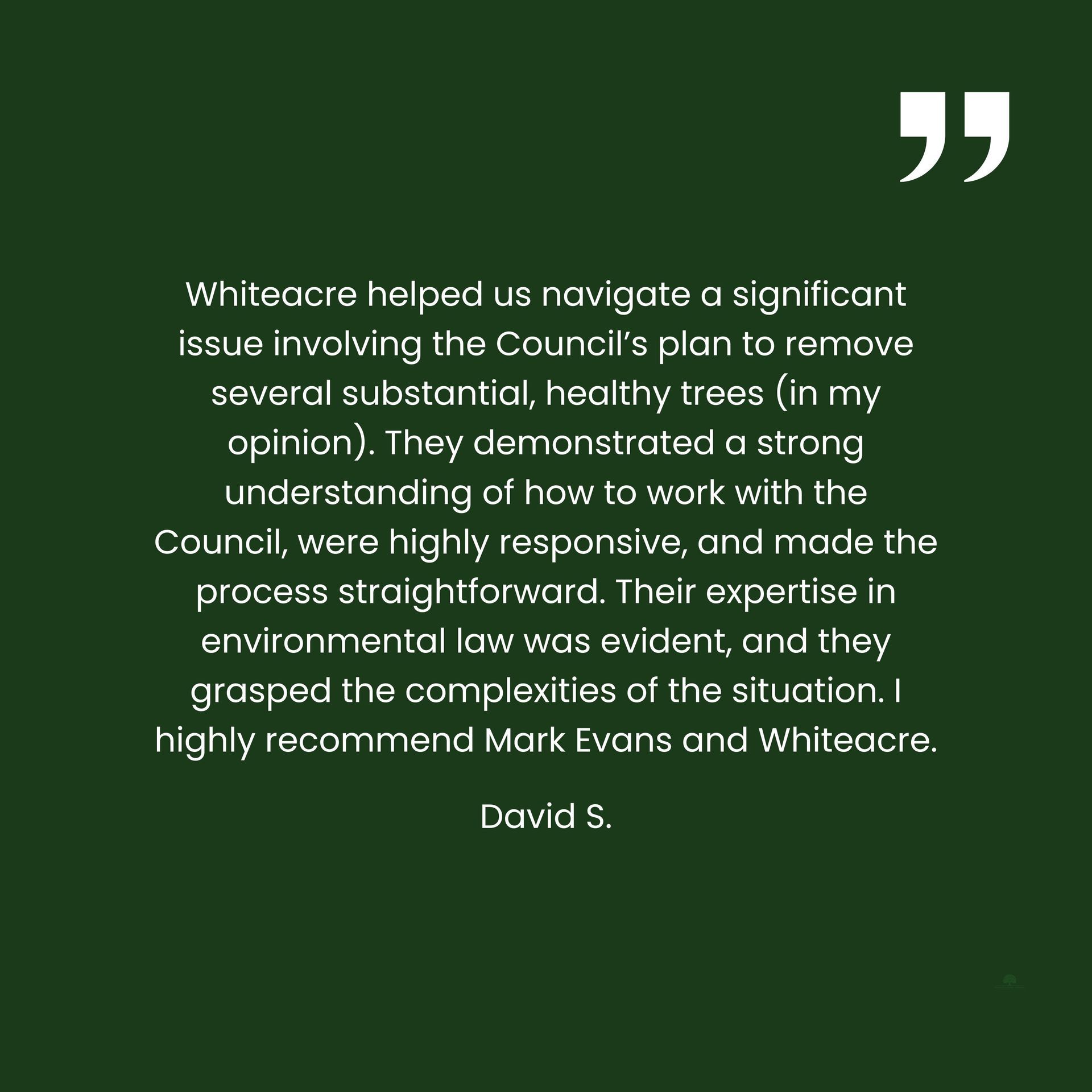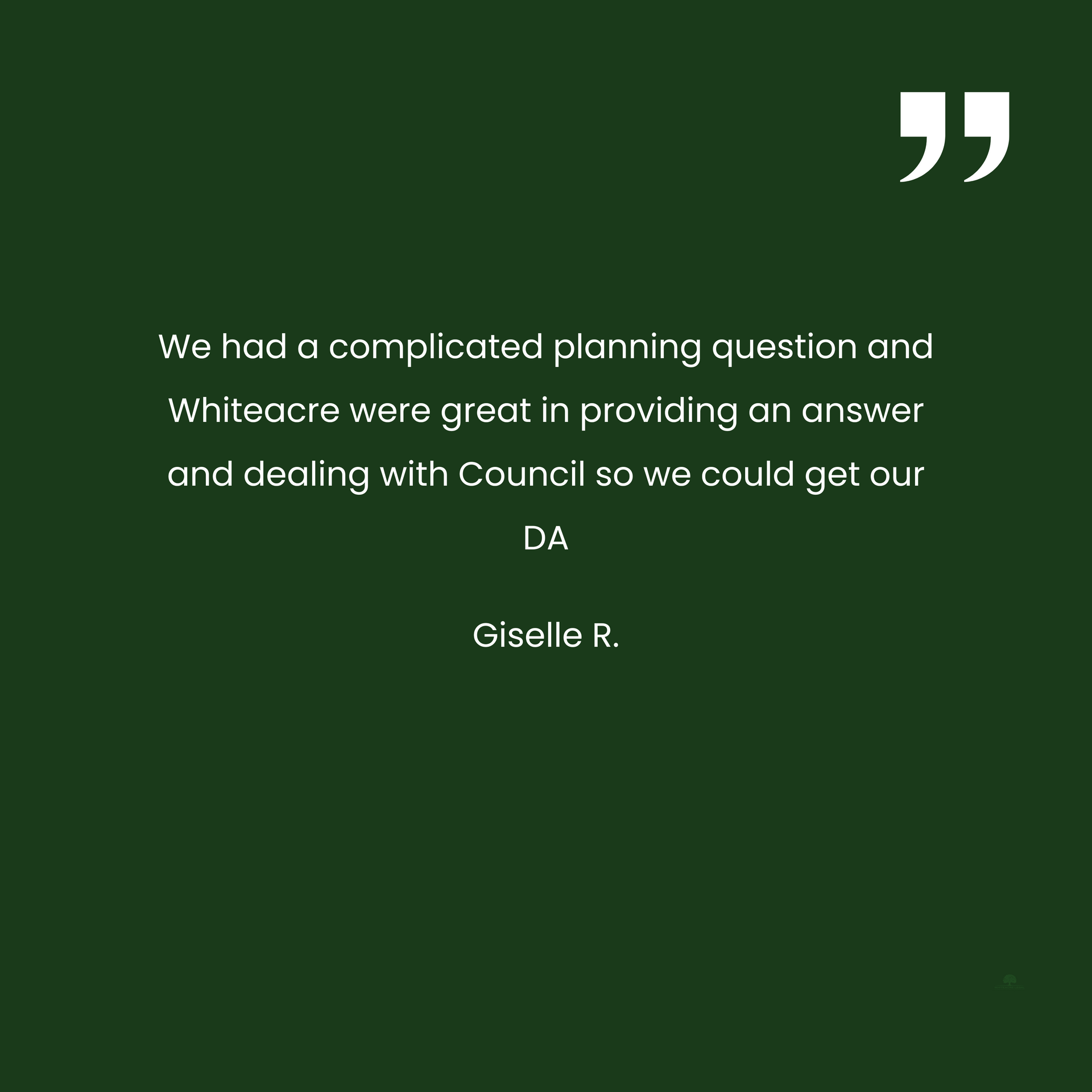When is a development application made?
In NSW a development application is “made” when the development application is lodged through the NSW planning portal, all of the required documents are provided, the application fee is paid and, finally, notification of lodgement is received by both the applicant and the consent authority.
Only when all of these criteria are met can a development application be said to have been made. This specificity is important because new environmental planning instruments ( EPIs) often contain a savings provision which excludes DAs “made” but not “determined” at the time of introduction of the new EPI.
This article reviews recent cases dealing with the question of when a DA is “made”.
Commitment Pty Ltd v Georges River Council (No 2) [2022] NSWLEC 94 (Commitment)
In this case the applicability of the Hurstville Local Environmental Plan 2021 HLEP 2012) or the Georges River Local Environmental Plan 2021 (GRLEP 2021) depended on when the development application was made. Clause 1.8A of GRLEP 2021 provides that the GRLEP 2021 does not apply to a development application “made, but not yet determined”, on or before the commencement date of the GRLEP 2021.
The question in Commitment was whether the Applicant’s development application was “made” on or before the GRLEP 2021 commenced.
Held
Pain J determined at [59] that an Applicant submits a development application via the NSW planning portal, lodges it when the fee is paid and notified as required by cl 50(8) and “makes” the DA when there has been substantial compliance with the regulations.
Facts
On 30 September 2021, the development application ( DA ) was submitted to the NSW planning portal.
On 8 October 2021, two things happened: the development application fee was paid and the GRLEP 2021 was published on the NSW legislation website, repealing and replacing the HLEP 2012.
Section 24 of the Interpretation Act 1987 (NSW) provides that “If an Act or statutory rule provides that it shall commence, or be deemed to have commenced, on a particular day, it shall commence, or be deemed to have commenced, at the beginning of that day.”
Both parties agreed that the GRLEP 2021 came into force very early on 8 October 2021.
Clause 1.8A of GRLEP 2021 contains the relevant savings provision:
1.8A Savings provisions relating to development applications
If a development application has been made before the commencement of this Plan in relation to land to which this Plan applies and the application has not been finally determined before that commencement, the application must be determined as if this Plan had not commenced.
[our emphasis]
When the DA was submitted to the NSW planning portal (30 September 2021) the Environmental Planning and Assessment Regulation 2000 (EPA Regulation 2000) applied. Clause 50 of the EPA Regulation 2000 set out the requirements for a development application to be “made”:
50 How must a development application be made?
(1) A development application must –
(a) be in the form that is approved by the planning secretary and made available on the NSW planning portal,
(b) contain all of the information that is specified in the approved form or required by the Act and this Regulation, and
(c) be accompanied by the information and documents that are specified in Part 1 of Schedule 1 or required by the Act and this Regulation,
(d) be lodged on the NSW planning portal.
(8) The applicant must be notified, by means of the NSW planning portal, that the development application has been lodged.
…
(9) A development application is taken not to have been lodged until the fees notified to the applicant by means of the NSW planning portal have been paid.
Note: The Environmental Planning and Assessment Regulation 2021 (EPA Regulation 2021) repealed and replaced the EPA Regulation 2000. Clause 50 of the EPA Regulation 2000 became clause 24 in the EPA Regulation 2021 and contains similar language and similar provisions.
The Applicant argued that a development application is “made” when it is uploaded to the NSW planning portal and contains the documents and information required by the EPA Regulation 2000.
Moreover, under s 4.12(1) and (2) of the EPA Act an application may be made by ‘a person’, not a consent authority. Accordingly, persons other than an Applicant cannot determine if an application is “made” given the entitlement of a person to apply granted by s 4.12 of the EPA Act. An Applicant’s entitlement to make a development application under s 4.12 of the EPA Act is frustrated by a construction whereby ‘lodgement’ must be satisfied in order for an application to be made when that is clearly a separate process and outside the control of the Applicant.
The Council argued that the lodgement of a DA on the NSW planning portal is one aspect of the making of a DA such that a DA could not be made simply when “put” onto the NSW planning portal by the applicant. To accept this construction gives the EPA Act and EPA Regulation 2000 no work to do. Lodgement on the planning portal is a necessary pre-requisite to a DA being “made” and lodgement is expressly contingent on payment of the relevant fee.
Decision
The Court held (at [47]) that a DA is made for the purposes of the savings provision in cl 1.8A of the GRLEP 2021 when there is substantial compliance with each of the requirements of the EPA Act and EPA Regulation 2000 applicable to the making of development applications. This includes all of the requirements of cl 50 (above) and payment of the fee.
Pain J found at [50] that, “Arguably only once substantial compliance with cl 50(1) is achieved has a DA been made sufficient to enable its determination. One requirement is that “lodgement” of a DA is required by cl 50(1)(d) and must be read with subcl (9) (the requirement to pay a fee).”
Pain J held (at [56]), that whether a matter is within a person’s control, or not, is not relevant to statutory construction. In this case, it was irrelevant whether the Applicant was in control of when the DA was made for the purposes of construing the legislation.
The Court agreed with the Council’s argument that an applicant submits the DA via the NSW planning portal and obtains a unique PAN number, lodges it when the fee is paid and notified and “makes” the DA when there is substantial compliance with all of the requirements of cl 50 of the EPA Regulation 2000.
Key Takeaways
- An Applicant submits a DA via the NSW planning portal and obtains a unique PAN number, lodges it when the fee is paid and “makes” the DA when there is substantial compliance with cl 50 of the EPA Regulation 2000.
- Whether matters outside the control of the Applicant delay or impact the date a DA is “made” is not relevant to the exercise of statutory construction required to determine when a DA has been made.
Hinkler Ave 1 Pty Limited v Sutherland Shire Council [2022] NSWLEC 150
Similar to Commitment, at the core of this case was a dispute about when a development application was made.
The applicability of the State Environmental Planning Policy (Housing) 2021 (2021 SEPP), depended on when the development application was made. On 26 November 2021, the 2021 SEPP repealed and replaced the State Environmental Planning Policy (Affordable Rental Housing) 2009 (2009 SEPP). The 2021 SEPP has different standards and requirements to those of the 2009 SEPP, which restricted the Applicant’s proposed development.
The 2021 SEPP contained a savings provision which, if satisfied for the Applicant’s development application, would mandate that the application was determined pursuant to the old 2009 SEPP, not the new 2021 SEPP.
The question in this case was whether the Applicant’s development application was “made” on or before the 2021 SEPP commenced.
Held
Moore J determined that the Applicant’s development application was not made on or before the 2021 SEPP commenced. Moore J found that, as at 26 November 2021, the development application was not accompanied by either the A4 plan of the building required by cl 50(1)(c) and cl 2(1)(d) of Sch 1 of the EPA Regulation 2000 (at [59], [60], [67], [68], [71]) or payment of a fee duly determined and notified to the Applicant (at [61]-[64], [73]).
Facts
The Applicant submitted a development application through the NSW planning portal on 22 October 2021. Exchanges between the Applicant and the Council seeking further information about the development application took place after 22 October 2021.
The EPA Regulation 2000 requires a number of documents, plans and information to be uploaded to the NSW planning portal to form a complete application. Schedule 1, 2(d) of the EPA Regulation 2000 requires:
(d) in the case of development that involves the erection of a building, an A4 plan of the building that indicates its height and external configuration, as erected, in relation to its site (as referred to in clause 56 of this Regulation),
The development application was not accompanied by “an A4 plan of the building that indicates its height and external configurations, as erected, in relation to its site”. Other plans of the buildings to be erected on the site (the proposed development comprised four buildings), from which the heights and external configurations of the buildings could be derived, did accompany the development application. But there was no single A4 plan of the buildings that indicated their heights and external configurations.
The consent authority, Sutherland Shire Council (Council), issued requests for additional information, first on 23 November 2021 and again on 29 November 2021. The Applicant issued a response to those requests on the NSW planning portal on 26 November 2021 and 1 December 2021 respectively. Although the Applicant did supply further plans, it never supplied a single A4 plan of the buildings that indicated their heights and external configurations.
On 2 December 2021 the Council issued an invoice for the development application fee through the NSW planning portal. The Applicant paid the invoice on 9 December 2021.
The parties sought determination of a legal question: for the purpose of the savings provision in the 2021 SEPP, was the development application to be regarded as having been made on or before 26 November 2021 when the new 2021 SEPP commenced?
The EPA Regulation 2000 applied at the time. Clause 256(1) of the EPA Regulation 2000 required that the Council raise an invoice within 14 days of receiving an application.
Note: Following the introduction of the new EPA Regulation 2021 this requirement remains and is found in cl 256 of the EPA Regulation 2021.
The Applicant argued that the failure of the Council to discharge its mandatory obligation under cl 256(1) of the EPA Regulation 2000 should not be permitted to stand in the way of the conclusion that the Applicant’s development application had been made, but not determined, on or before 26 November 2021. Further, the Applicant had substantially and sufficiently complied with the requirements of the EPA Regulation 2000 by 26 November 2021 so that the Applicant’s development application should be held to have been made by that date.
The Council argued that the plans which satisfied the EPA Regulation 2000 were not uploaded by the Applicant until 1 December 2021. This meant that the obligation to determine and notify the development application fee as required by cl 256(1) of the EPA Regulation 2000 was not triggered until those plans, which were compliant with Sch 1, cl 2(d) of the EPA Regulation 2000, were uploaded to the NSW planning portal on 1 December 2021.
Decision
Moore J applied the analysis of Pain J in Commitment (above) concerning the relevant steps in the process necessary to regard a development application as being “made”. For the reasons explained in Commitment a development application can only be regarded as having been made after the fee payable for such a development application has been paid.
In this instance, the Applicant had not uploaded the A4 plan required until 1 December 2021, nor paid the applicable fee until 9 December 2021, both of which were required prior to a development application being “made”.
Moore J found that there was no evidence the Applicant had rejected the validity of the Council’s requests for further information between 22 October 2021 (DA submitted) and 2 December 2021 (invoice raised) and the Applicant’s planner should have done so if it felt the Council had no justification to raise the questions it did.
Further, Moore J held that in circumstances in which the Applicant asserts that the Council breached its obligations in the EPA Regulation 2000 it was open to the Applicant during this time to bring urgent proceedings in of the Land and Environment Court to remedy the alleged breach by the Council. The breach could have been remedied by the Applicant exercising its right pursuant to s 9.45 of the EPA Act and approach the Court to seek an order to require the Council to determine and advise the Applicant of the development application fee payable.
Key Takeaways
- A DA is “made” for the purposes of savings provisions when it is submitted to the NSW planning portal and the fee is paid.
- Following submission of the DA into the NSW planning portal, a consent authority has 14 days to raise an invoice for payment of the applicable development application fee.
- If a Council refuses to raise the invoice for payment and requests additional information to accompany the application in accordance with the requirements of the regulations, Applicants should consider carefully whether their application is compliant and, if it is, state that fact very clearly in written communication to the Council.
- Where a Council breaches its obligation to raise the invoice for payment in time, it is open to Applicants to bring urgent proceedings in Class 4 of the Land and Environment Court to remedy the breach.
Hinkler Ave 1 Pty Limited v Sutherland Shire Council [2023] NSWCA 264
The Applicant appealed the decision of Moore J (at first instance) to the NSW Court of Appeal.
Held
Basten AJA (with whom Gleeson JA agreed) and Preston CJ of the Land and Environment Court (dismissing the appeal) held that on a proper construction of the statutory provisions governing the making of a development application, the Applicant’s development application was not “made” on or before the commencement date of the 2021 SEPP. Accordingly, Moore J was correct in finding that the 2021 SEPP and not the 2009 SEPP applied to the Applicant’s development application. Preston CJ set out the statutory scheme for making development applications to resolve the competing interpretations advanced by the parties.
The analysis provided by Preston CJ is especially helpful for town planners in understanding the requirements of making development applications.
Statutory scheme for making development applications
Section 4.12(1) of the EPA Act states simply that a “person may, subject to the regulations, apply to a consent authority for consent to carry out development”. The relevant regulation in force at the time the Applicant made the development application was the EPA Regulation 2000.
Clause 50 of the EPA Regulation 2000 prescribed how a development application must be made and clause 50(1) prescribed the form and manner of making a development application for consent to carry out development (other than state significant development).
Clause 50 provided:
(1) A development application, other than an application for State significant development, must—
(a) be in the form that is approved by the Planning Secretary and made available on the NSW planning portal, and
(b) contain all of the information that is specified in the approved form or required by the Act and this Regulation, and
(c) be accompanied by the information and documents that are specified in Part 1 of Schedule 1 or required by the Act and this Regulation, and
(d) be lodged on the NSW planning portal.
Paragraphs (a) to (c) prescribe the form the development application must take, paragraph (d) prescribes the manner in which the application must be lodged, via the NSW planning portal.
His Honour Preston CJ held that the first type of information that was required in this case to be provided included an A4 plan to accompany the development application. Although the Applicant’s development application included a series of plans of the buildings, the development application was not accompanied by an “A4 plan” of the buildings that indicated their heights and external configurations, as erected in relation to the site. The Applicant provided an A3 site plan and five A3 sheets of elevations, which were extracts from the full set of plans.
Accordingly, Preston CJ found at [94] that “the requirement that such an A4 plan accompany the development application remained unmet as at the commencement date of the 2021 SEPP of 26 November 2021.”
His Honour held that the second type of information (or document) that was required to accompany the development application was the payment (or record of payment) of the fee to accompany the development application. This is because clause 256 of the EPA Regulation 2000 requires that the consent authority make a determination of the fee to “accompany a development application” and to notify the Applicant of the determination.
Preston CJ held at [98] that clause 256 of the EPA Regulation 2000 imposes a requirement on the Applicant that payment of a fee, which has been determined by the Council and notified to the Applicant, “accompany a development application”. Accordingly, this Honour held:
“The payment of a duly determined and notified fee thus falls within the category of “information and documents that are specified in Part 1 of Schedule 1 or required by the Act and this Regulation”, which cl 50(1)(c) of the EPA Regulation 2000 requires a development application to be accompanied by.”
His Honour held at [99] that the consequence of the Applicant’s development application not “meeting these two form requirements that the development application be accompanied by the A4 plan of the building and the payment of the fee was that the development application was incomplete as at 26 November 2021.”
Incomplete and ineffective application
His Honour went on to discuss the nature of an incomplete application being ineffective, that is, not being capable of engaging the power of the consent authority to grant consent to the application.
The wording of the savings provision in the 2021 SEPP (a development application “made” but not yet “determined”) presupposes that there is a complete and effective development application that can be “determined” by the grant of consent. His Honour held at [118]:
“The consent authority would have no power to determine by the grant of consent a development application that is incomplete and ineffective. Thus, both the word “made” and the word “determined” demand that the development application be complete and effective in order to be an application in terms of the EPA Act.”
What about the deeming provision in cl 50(9) of the EPA Regulation 2000?
Recall that cl 50(9) of the EPA Regulation 2000 provides:
(9) A development application is taken not to have been lodged until the fees notified to the applicant by means of the NSW planning portal have been paid.
His Honour found at [125] that “The deeming provision in cl 50(9) operates to deem a development application, although in fact lodged on the NSW planning portal under cl 50(1)(d), not to have been lodged until the fees notified to the applicant by means of the NSW planning portal have been paid.”
The lodging of the development application on the planning portal is the way in which the application must be made. Cl 50(9) has 2 effects:
- it deems a development application that has been lodged on the portal not to have been lodged; and
- it also causes a development application not to have been “made” until the fee notified to the Applicant has been paid.
Accordingly, his Honour stated at [129]: “A development application that is not lodged is not made. Thus, cl 50(9) operates not only to deem a development application not to have been “lodged” until the fee notified to the applicant has been paid, but also to cause the development application not to be “made” as the manner requirement for making a development application would not be satisfied.”
In summary, Preston CJ found that the Applicant’s development application was incomplete and ineffective because it was not accompanied by the A4 plans and payment of the fee. Neither occurred before the commencement of the 2021 SEPP on 26 November 2021. As a consequence, the development application was not “made” for the purpose of the savings provision and the 2021 SEPP applied, not the former 2009 SEPP.
DA not made until Applicant notified of payment
Basten AJA (with whom Gleeson JA agreed) held at [28] that the development application is “made” when the consent authority provides a notification that the application is lodged after the fee has been paid. It is the date of notification of payment of the fee, not the date of payment of the fee itself which is the relevant date.
Basten AJA found that cl 50 of the EPA Regulation 2000 sets out a number of steps that must occur in the making of a development application, namely, the lodging on the NSW planning portal, the notification to the Applicant of the fee payable, payment of the fee and, finally, notification through the NSW planning portal that the development application has been lodged (cl 50(8)).
Recall that cl 50(8) of the EPA Regulation 2000 provides:
50 How must a development application be made?
…
(8) The applicant must be notified, by means of the NSW planning portal, that the development application has been lodged.
(9) A development application is taken not to have been lodged until the fees notified to the applicant by means of the NSW planning portal have been paid.
His Honour held at [27] – [28]:
“[27] … On one view, that [the finding of a precise date the development application is made] is the purpose and effect of cl 50(8), which requires that the applicant be notified that the development application has been lodged.
[28] Mechanically, the notice is generated by the NSW planning portal itself. However, that must be a result of steps taken by a party to the process. It is clearly not the applicant that directly causes the notice to be given, because it is the recipient of the notice. The purpose of the notice is to let the applicant know that lodgement is complete. The only other party which can cause the giving of the notice is the consent authority. On that view, the application is lodged when the consent authority provides a notification to that effect on the NSW planning portal….”
Key Takeaways
- The Court of Appeal upheld Moore J’s findings in the first instance.
- A development application is incomplete if it is not accompanied by payment of the relevant fee.
- A development application is taken to have been made not when the application fee is paid, but when both the Council and the Applicant are notified through the NSW planning portal that the application is lodged (pursuant to cl 50(8) of the EPA Regulation 2000).
Summary
- In NSW a development application is “made” for the purposes of most savings provisions, when the application fee is paid, compliance with the requirements of the regulation is achieved and when notification of lodgement via the NSW planning portal is received.
- Where an applicant considers requests for additional information are unwarranted or have been satisfied it should state this early in writing and provide reasons.
- Non-compliance with requirements for development applications in the regulations will result in an ineffective development application that does not engage the power of the consent authority to grant consent to the application.
- In circumstances where the Council delays or refuses to raise an invoice for payment of the application fee an Applicant may bring proceedings in Class 4 of the Land and Environment Court to remedy the breach.
Require further assistance?
We have assisted many applicants and town planners negotiating issues with acceptance of development applications into the NSW planning portal by Council and the raising of invoices for payment. As demonstrated by the cases above, the date a development application is made can have serious implications.
If you require advice regarding when your development application may have been “made” or are considering approaching the Land and Environment Court for relief against a failure to raise an invoice or accept a development application, we can assist you in this process.
Please do not hesitate to call us on (02) 9145 0900 or make an enquiry below.
Browse by categories

Servicing all of NSW, Whiteacre provides expert property law and planning and environment law advice and assistance.
✓ Planning Law Advice
✓ Land and Environment Court Appeals
✓ Voluntary Planning Agreements and Contributions
✓ Development Control Orders and Enforcement
✓ Property Development Advice and Due Diligence
✓ Title Structuring
✓ Easements and Covenants
✓
Strata and Community Title legislation
Book an initial consultation through our website with our planning law solicitor. Whether it's about planning and environment law or property law, you can approach us and discuss your matter to make sure we are a good fit for your requirements.







































